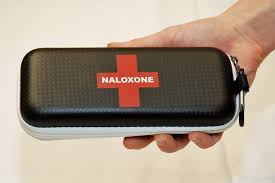CANADIAN NARCOTICS & NALOXONE ASSOCIATION
Harm Reduction Strategies To Help Save Canadian Lives
HOW NALOXONE WORKS
Naloxone (pronounced na-LOX-own) is a fast-acting drug used to temporarily reverse the effects of opioid overdoses.
Naloxone can restore breathing within 2 to 5 minutes. When you take an opioid, it affects certain receptors in your brain. Naloxone works by kicking opioids off the receptors in your brain and binding to those receptors instead. This reverses or blocks the effects of opioids on your body.
Naloxone only works if you have opioids in your system, such as:
- fentanyl
- heroin
- morphine
- codeine
Naloxone only works temporarily
While naloxone is only active in the body for 20 to 90 minutes, the effects of most opioids last longer. This means that the effects of naloxone are likely to wear off before the opioids are gone from the body, which causes breathing to stop again.
Naloxone may need to be used again, depending on the amount or type of opioid taken, or how the opioids were taken (for example: oral, injection).
Naloxone Kits are available to anyone who requests them Free of charge including delivery. Please click below to order your Naloxone Kits to help save a life.What are some signs of an opioid overdose?
- unconsciousness
- very small pupils
- slow or shallow breathing
- vomiting
- an inability to speak
- faint heartbeat
- limp arms and legs
- pale skin
- purple lips and fingernails
About us
Naloxone is a medicine that rapidly reverses an opioid overdose. It is an opioid antagonist. This means that it attaches to opioid receptors and reverses and blocks the effects of other opioids. Naloxone can quickly restore normal breathing to a person if their breathing has slowed or stopped because of an opioid overdose. But, naloxone has no effect on someone who does not have opioids in their system, and it is not a treatment for opioid use disorder. Examples of opioids include heroin, fentanyl, oxycodone (OxyContin®), hydrocodone (Vicodin®), codeine, and morphine.
How is naloxone given?
Naloxone should be given to any person who shows signs of an opioid overdose or when an overdose is suspected. Naloxone can be given as a nasal spray or it can be injected into the muscle, under the skin, or into the veins.
Can I give naloxone to someone who has overdosed?
Yes. Families with loved ones who struggle with opioid addiction should have naloxone nearby; ask their family member to carry it; and let friends know where it is. People should still call 911 immediately in the event of an overdose.
Naloxone is being used more by police officers, emergency medical technicians, and non-emergency first responders than before. In most states, people who are at risk or who know someone at risk for an opioid overdose can be trained on how to give naloxone. Families can ask their pharmacists or health care provider how to use the devices.
What precautions are needed when giving naloxone?
Naloxone works to reverse opioid overdose in the body for only 30 to 90 minutes. But many opioids remain in the body longer than that. Because of this, it is possible for a person to still experience the effects of an overdose after a dose of naloxone wears off. Also, some opioids are stronger and might require multiple doses of naloxone. Therefore, one of the most important steps to take is to call 911 so the individual can receive immediate medical attention.
People who are given naloxone should be observed constantly until emergency care arrives. They should be monitored for another 2 hours after the last dose of naloxone is given to make sure breathing does not slow or stop.
People with physical dependence on opioids may have withdrawal symptoms within minutes after they are given naloxone. Withdrawal symptoms might include headaches, changes in blood pressure, rapid heart rate, sweating, nausea, vomiting, and tremors. While this is uncomfortable, it is usually not life threatening. The risk of death for someone overdosing on opioids is worse than the risk of having a bad reaction to naloxone. Clinicians in emergency room settings are being trained to offer patients immediate relief and referral to treatment for opioid use disorder with effective medications after an opioid overdose is reversed.
Side effects from naloxone are rare, but people might have allergic reactions to the medicine. Overall, naloxone is a safe medicine. But it only reverses an overdose in people with opioids in their systems and will not reverse overdoses from other drugs like cocaine or methamphetamine.
Points to remember
- Naloxone is a medicine that rapidly reverses an opioid overdose. It attaches to opioid receptors and reverses and blocks the effects of other opioids.
- Naloxone is a safe medicine. It only reverses overdoses in people with opioids in their systems.
- There are two FDA-approved formulations of naloxone: injectable and prepackaged nasal spray.
- Police officers, emergency medical technicians, and first responders are trained on how to give naloxone.
- In some states, friends and family members can be trained on how to give naloxone.
- Naloxone only works in the body for 30 to 90 minutes. It is possible for a person to still experience the effects of an overdose after naloxone wears off or need multiple doses if a potent opioid is in a person’s system.
